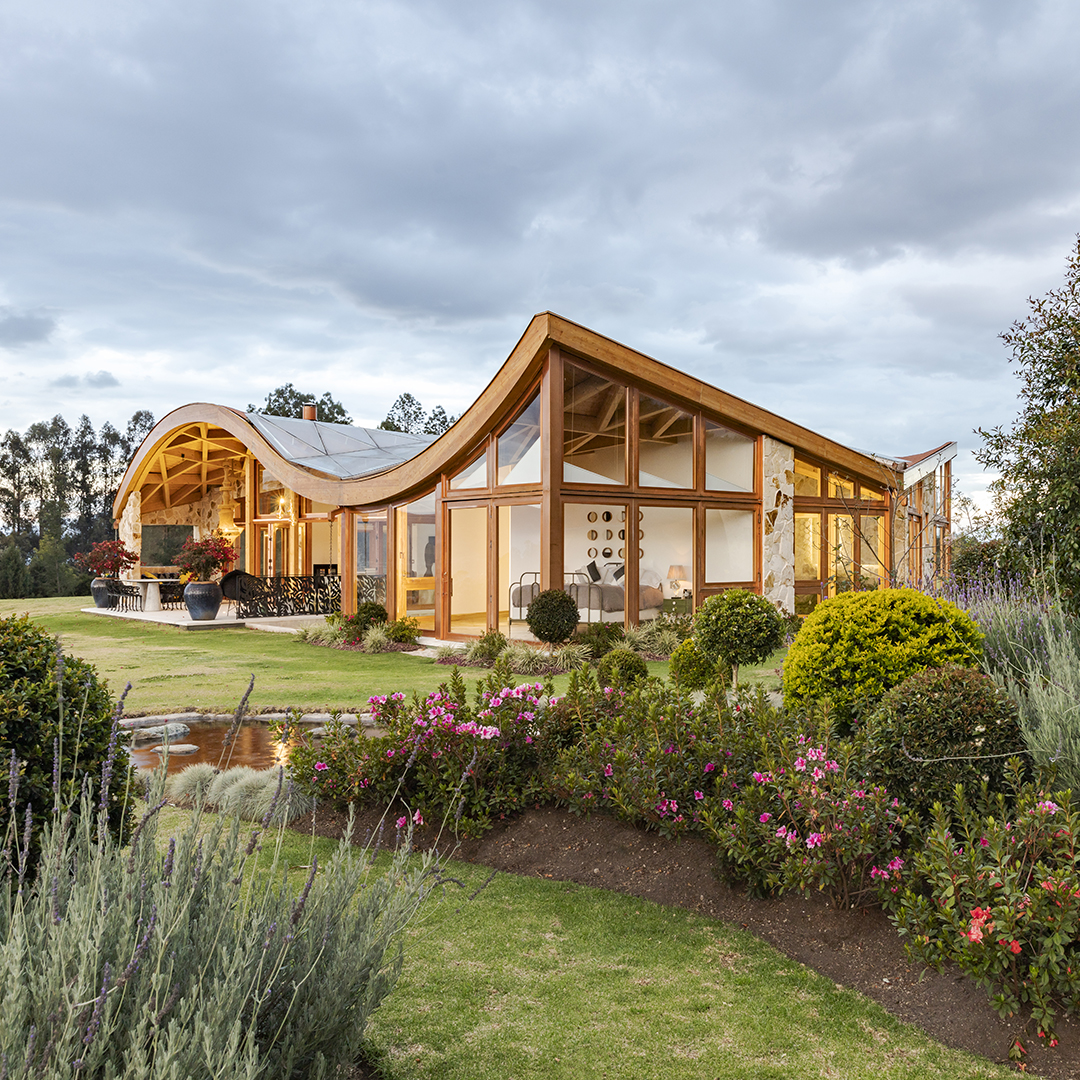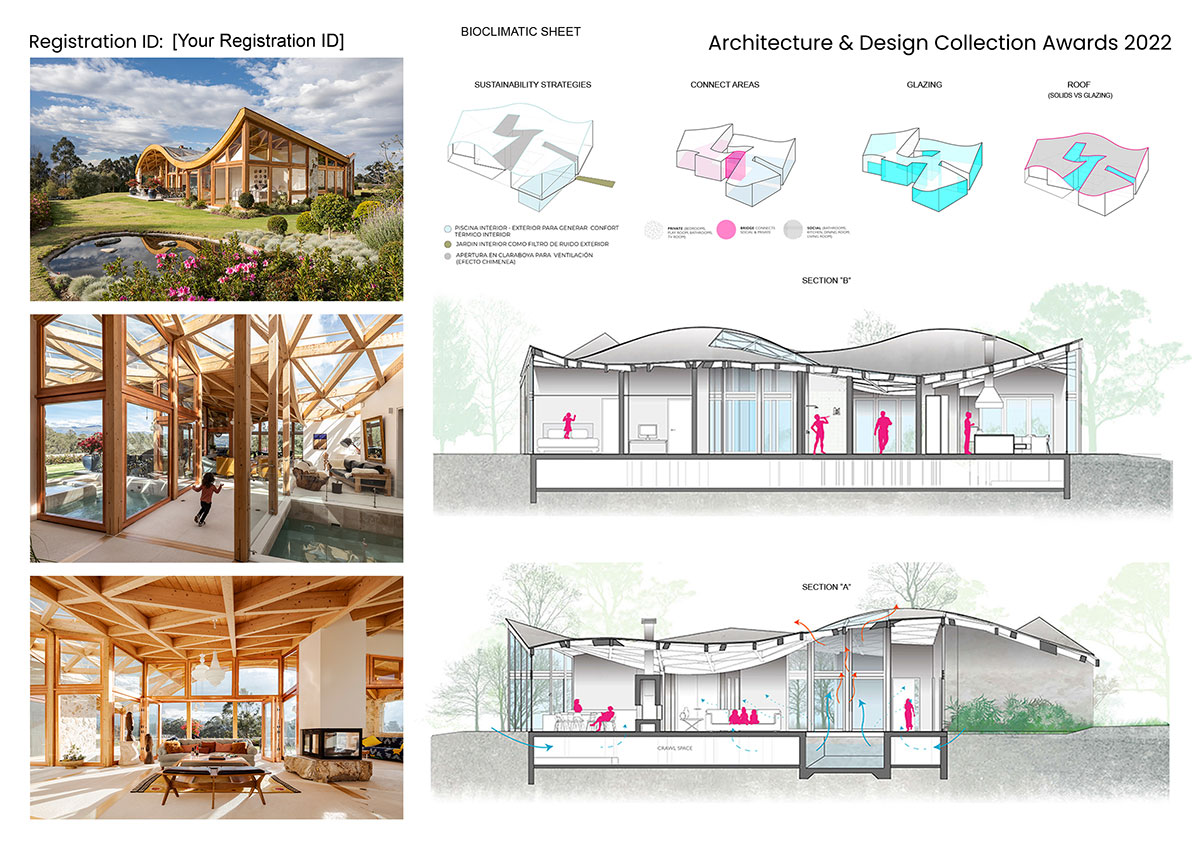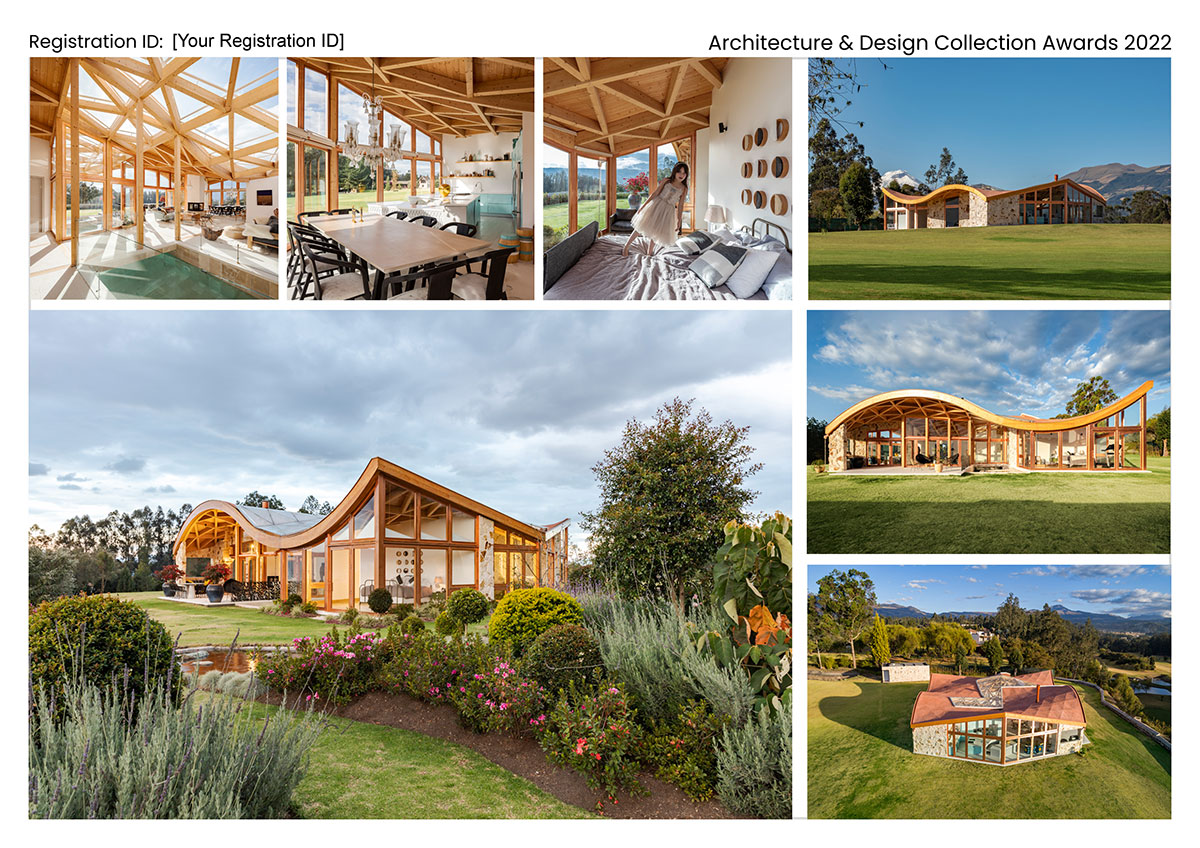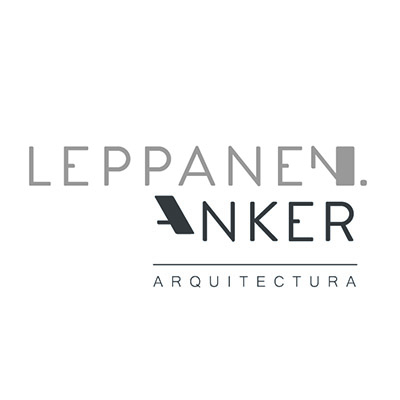Architect / Designer:
Studio:
Design Team:
Copyright:
Country:
Selva Alegre was created to take inspiration from the surrounding environment, the Andes Mountains in Ecuador. This is a wooden house that is located away from the city and located in an open landscape ideal for a retreat space. The idea was to make a house that would be unified conceptually and visually with the surrounding natural landscape. The dwelling sits at one end of the lot, near the edge of a creek, allowing uninterrupted visuals throughout the project. The strategy was to leave the ground floor as open as possible and the programmatic divisions clear, so that the design resembles that of a typical hacienda house but with a modern twist, we wanted to reinvent the user experience of these centuries old weekend escapes. Our concept was to return to the roots of the hacienda in terms of form and material. This strategy resulted conceptually in a continuous wavy blanket which gently protects the program below it. At the interior, a central void creates a clear division between the social and private spaces of the house, preserving the typology of the traditional hacienda house. Overhead light brightens the indoor-outdoor pool and main circulation inside this intermediate space through skylights that also create thermal comfort inside the house through bioclimatic strategies of cross ventilation and chimney effect. The main spaces such as bedrooms, living room, dining room and kitchen are opened towards the surrounding landscape through prefabricated laminated beams whose curvature frames the visuals, creating a symbiosis between the context and the house. The movement of the mountains served as an inspiration in the beam’s volumetric conception. A sustainable laminated wood construction system is used for the structure which was completely pre-manufactured in Europe, for subsequent assembly in Ecuador. Laminated wood was our material of choice, both for its flexible properties as well as for the natural – and at the same time contemporary – feeling that it adds to our design. The computerized parametric model allowed the repetition of specific beams and a total constructability of the roof so that it would be efficient and affordable. Likewise, the repetition of pieces allowed a fast and high construction quality. Automated machines were used to accurately cut and fabricate each piece of wood, creating a puzzle that fitted perfectly when assembled. The laminated and curved beams are repeated with the same radius, which allow the different folds of the roof. The triangulation of the structure creates an efficient assembly and also ease of transportation. For the coating of the house local materials were used such as stone, tile and the use of local craftsmen for the profiling of the windows made of copper-colored coated steel, which were handmade. This is the first time that a construction of this type has been achieved to such a detailed level in Ecuador. Integrating digital technology with local manual labor techniques has not only led us to produce a unique type of architecture but also to contribute to the improvement of construction possibilities in Ecuador.Offering popular women’s necklaces such as pendants, http://fakewatch.is best replica watches chokers and chain necklace. Shop for jewelry in a variety of metals and gemstones to suit any occasion
Leppanen Anker Arquitectura
Leppanen Anker Arquitectura is an award winning architectural firm founded in Quito, Ecuador in 2012 with the vision of creating a space for architectural experimentation. The office focuses in developing spatial experiences through the fusion of parametric tools with contextual, cultural, material, formal and sustainable influences. Founders Aaron Leppanen and Gabriela Anker have experience in Architectural Design, Urban Design, Master Planning, Furniture Design, Construction Management and Digital Production and have worked on projects in Europe, Asia, North America, South America and the Middle East. The office has international experience working across multiple scales, programs, cultures and locations.










